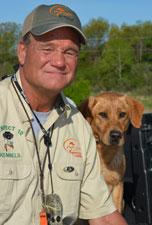
4 Good Reasons to Crate-Train Your Dog
Posted by Rick GrantOne of the first things you should do when you get a new puppy is get him used to spending time in his crate, or portable kennel. If your dog lives in the house, the crate is a good place for him to be when you don’t want him underfoot. It’s also the perfect solution for keeping him out of trouble when you’re not home.
Even if you house your dog in an outdoor run, there will still be times when it makes sense to crate him, so you definitely want to get him used to spending time in his crate from an early age.
I do occasionally have a client bring in a dog for training who tells me it’s mean or unfair to make a dog stay in a crate. My response is that unless you have the ability to literally watch your dog 24 hours a day, a crate is the best solution for keeping your dog safe and well-rested.
Here are the four most obvious reasons I can give you for crate-training your dog.
The kennel becomes your dog’s home.
If you put your new puppy in his crate whenever you can’t be around to directly supervise him, he will come to regard it as his castle. It’s his safe place. A dog quickly learns he can rest in this no-stress environment, and you can relax knowing he isn’t on the loose getting into trouble.
I’m not suggesting you put your new puppy in his crate and ignore him or leave him in there for hours on end. But he should learn that when it’s not training time, fun time, or dinner time, that means it’s time to rest, and the kennel is the place for that.
“Kennel” is one of the first obedience commands your dog learns.
From the day you bring a new puppy into your house, he’s constantly learning. Whether he’s learning good habits or bad habits, however, is up to you. Whenever you put your pup into his crate, you should tell him “Kennel.” It won’t be long until he associates that command with going to his safe place. All of the other training you do with your dog will be based on verbal or visual cues. “Kennel” is that first, simple communication that you can build on.
The “Kennel” command can tie to more advanced training.
As you work on obedience training with your puppy, which most people regard as the basic commands of “Heel,” “Sit,” “Stay” and “Come,” there is one more that I believe is too-often overlooked, and that’s a command to send the dog away from you. If your dog is a retriever, you’ll be sending him out to pick up dummies and birds. If he’s going to be an upland dog, regardless of whether he’s a flushing breed or pointing breed, you’ll be encouraging him to get out and hunt in front of you.
With those concepts in mind, what better way to reinforce the concept than sending him to his kennel? Once your dog knows what “Kennel” means, you should be able to send him there from 10 feet, 30 feet, or really almost any distance.
It’s the best way for your dog to travel.
Heading out on hunting trip is exciting for everyone, including your dog. Rather than having him loose in the truck, jumping around, stepping on your gear, shedding on the seats and getting mud all over the place, make him travel in his crate. That way he isn’t distracting the driver or wasting energy that he should be saving for the hunt.
I’ve also noticed that dogs rest more comfortably after a hard day of hunting when they can crawl into that nice, familiar crate and doze off, rather than trying to adjust to a new place like a hotel room.
One other thing to consider when buying a crate: Don’t buy a crate that’s larger than your dog really needs. If it’s large enough for him to turn around in and lie down comfortably, then it’s plenty big enough. When you’re traveling, those few inches between a Large and an Extra-Large crate can make a big difference in having room to pack all your gear for the trip.

Rick Grant
Fort Atkinson, WI
With his wife Terri, Rick co-owns and operates Perfect 10 Kennel. Their business offers boarding, grooming, and retriever training. They also breed Labrador retrievers. Rick has 30 years of experience in retriever training, participating in everything from field trials to hunt tests to upland hunting competitions.
Related Articles

